- Sorry, this product is unavailable.
-
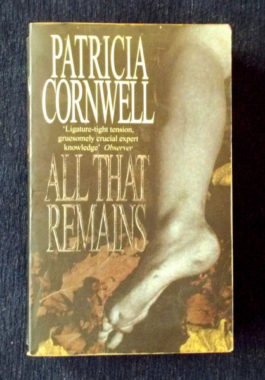 Kay Scarpetta III. In Richmond, Virginia, young lovers are dying. So far, four couples in the area have disappeared, only to be found months later as mutilated corpses. When the daughter of the president's newest drug czar vanishes along with her boyfriend, Dr. Kay Scarpetta knows time is short. Following a macabre trail of evidence that ties the present homicides to a grisly crime in the past, Kay must draw upon her own personal resources to track down a murderer who is as skilled at eliminating clues as Kay is at finding them...
Kay Scarpetta III. In Richmond, Virginia, young lovers are dying. So far, four couples in the area have disappeared, only to be found months later as mutilated corpses. When the daughter of the president's newest drug czar vanishes along with her boyfriend, Dr. Kay Scarpetta knows time is short. Following a macabre trail of evidence that ties the present homicides to a grisly crime in the past, Kay must draw upon her own personal resources to track down a murderer who is as skilled at eliminating clues as Kay is at finding them... -
 Neighbors were unaware of what went on behind the tightly closed doors of a house in Fresno, California - the home of the imposing, 300-pound Marcus Wesson, his wife, children, nieces and grandchildren. But on March 12, 2004, gunshots were heard inside the Wesson home and police officers, responding to what they believed was a routine domestic disturbance, were horrified by the senseless carnage they discovered when they entered. This is a chilling true story of incest, abuse, madness and murder - it is one family's terrible and ultimately fatal ordeal at the hands of a powerful, manipulative man - a cultist who envisioned vengeful gods and vampires, and totally controlled those closest to him before their world came to a brutal and bloody halt. Illustrated with black and white photos.
Neighbors were unaware of what went on behind the tightly closed doors of a house in Fresno, California - the home of the imposing, 300-pound Marcus Wesson, his wife, children, nieces and grandchildren. But on March 12, 2004, gunshots were heard inside the Wesson home and police officers, responding to what they believed was a routine domestic disturbance, were horrified by the senseless carnage they discovered when they entered. This is a chilling true story of incest, abuse, madness and murder - it is one family's terrible and ultimately fatal ordeal at the hands of a powerful, manipulative man - a cultist who envisioned vengeful gods and vampires, and totally controlled those closest to him before their world came to a brutal and bloody halt. Illustrated with black and white photos. -

The Butchers: Brian Lane
$6.00What is the most effective way to dispose of a troublesome corpse? Eat it? Dip it in a vat of acid? Feed it to the pigs - or turn it into sausages? Just pop it in a furnace, maybe...? There's more than thirty cases here: from Catherine Hayes who set a trend in dismemberment in 1726 when she hacked off her husband's head and tossed it into the Thames, to Dennis Nilson who was doing much the same to his victims in 1983; from Marcel Petiot's quicklime pits in Occupied Paris, to New York's infamous Albert 'The Cannibal' Fish. Yet however meticulous and ingenious, none of them got away with it - painstaking investigation and forensics led to the final unmasking of the sadists and psychotics who sought such bloody concealment of their crimes. With black and white photographs. -
 Ron Williamson was a star college sportsman in the small town of Ada, Oklahoma. When he left to pursue his dreams he seemed destined for glory. But years of injury, drinking, drugs and women took their toll, and he returned to Ada a lonely drifter. Soon after his homecoming, a local cocktail waitress was raped and murdered. With no immediate leads, the police worked the case for five years before arresting Williamson and charging him with her murder. Despite no physical evidence, and based largely on the testimony of jailhouse snitches, he was found guilty at trial and sent to death row. Left to await his fate, Williamson was the only person to know the terrible truth: that an innocent man had been sent on a journey to hell. A journey from which he might never return...Illustrated with black and white photographs.
Ron Williamson was a star college sportsman in the small town of Ada, Oklahoma. When he left to pursue his dreams he seemed destined for glory. But years of injury, drinking, drugs and women took their toll, and he returned to Ada a lonely drifter. Soon after his homecoming, a local cocktail waitress was raped and murdered. With no immediate leads, the police worked the case for five years before arresting Williamson and charging him with her murder. Despite no physical evidence, and based largely on the testimony of jailhouse snitches, he was found guilty at trial and sent to death row. Left to await his fate, Williamson was the only person to know the terrible truth: that an innocent man had been sent on a journey to hell. A journey from which he might never return...Illustrated with black and white photographs. -
 Book XII of Brother Cadfael. Christmas, A.D. 1141: Abbot Radulfus returns from London, bringing with him a priest for the vacant living of Holy Cross, also known as the Foregate. The new priest is a man of presence, learning and discipline, but he lacks humility and the common touch. When he is found drowned in the millpond, suspicion is cast upon a young man who arrived with the priest's train and was sent to work in Brother Cadfael's garden. Indeed, he is soon discovered to be an impostor. To Brother Cadfael now falls the familiar task of sorting out the complicated strands of innocence and guilt.
Book XII of Brother Cadfael. Christmas, A.D. 1141: Abbot Radulfus returns from London, bringing with him a priest for the vacant living of Holy Cross, also known as the Foregate. The new priest is a man of presence, learning and discipline, but he lacks humility and the common touch. When he is found drowned in the millpond, suspicion is cast upon a young man who arrived with the priest's train and was sent to work in Brother Cadfael's garden. Indeed, he is soon discovered to be an impostor. To Brother Cadfael now falls the familiar task of sorting out the complicated strands of innocence and guilt. -
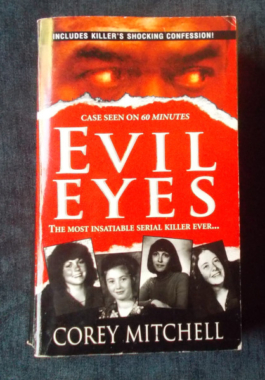 In Houston, Texas, on the morning of May 23, 1982, Carl 'Coral' Eugene Watts, 28, trapped two young women in their apartment. Only hours before, he'd killed another woman by drowning her in her bathtub. As Watts attempted to do the same to 20-year-old Lori Lister, her roommate Melinda Aguilar, 18, made a daring escape. Her courage led to Watts's arrest. Watts was a sadistic slayer with a lust for killing in a variety of ways: strangulation, suffocation, drowning and stabbing. He confessed to thirteen murders, but with no direct evidence to link him to the crimes, he managed to plea bargain his sentence down to 60 years for burglary. Due to a flaw in the Texas criminal justice system, Watts was supposed to be released from prison in 2006. Through the ceaseless efforts of investigators and the mother of one of his victims, Watts was finally tried and convicted to life in prison for a murder he had committed in Michigan in 1979. He died in 2007, still the prime suspect in approximately 90 other slayings. Experts theorise that Watts may have slain more than Ted Bundy, Jeffrey Dahmer, and John Wayne Gacy...combined. Here is the chilling story of how he almost got away with murder. Illustrated with black and white photographs.
In Houston, Texas, on the morning of May 23, 1982, Carl 'Coral' Eugene Watts, 28, trapped two young women in their apartment. Only hours before, he'd killed another woman by drowning her in her bathtub. As Watts attempted to do the same to 20-year-old Lori Lister, her roommate Melinda Aguilar, 18, made a daring escape. Her courage led to Watts's arrest. Watts was a sadistic slayer with a lust for killing in a variety of ways: strangulation, suffocation, drowning and stabbing. He confessed to thirteen murders, but with no direct evidence to link him to the crimes, he managed to plea bargain his sentence down to 60 years for burglary. Due to a flaw in the Texas criminal justice system, Watts was supposed to be released from prison in 2006. Through the ceaseless efforts of investigators and the mother of one of his victims, Watts was finally tried and convicted to life in prison for a murder he had committed in Michigan in 1979. He died in 2007, still the prime suspect in approximately 90 other slayings. Experts theorise that Watts may have slain more than Ted Bundy, Jeffrey Dahmer, and John Wayne Gacy...combined. Here is the chilling story of how he almost got away with murder. Illustrated with black and white photographs. -
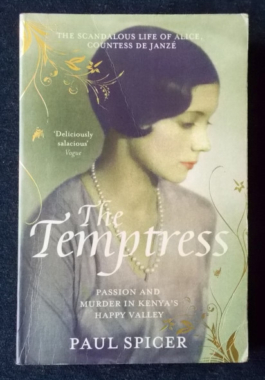 Alice de Janzé, glamorous American heiress, scandalised 1920's Paris when she left her aristocratic French husband for an English lover - whom she later tried to kill in a failed murder-suicide in the Gare du Nord. Abandoning Paris for the moneyed British colonial society known as Kenya's Happy Valley, she became the lover of the handsome womaniser, Joss Hay, Lord Erroll. In 1941, Erroll was found shot in his car on an isolated road. A cuckolded husband was brought to trial and acquitted... and the crime remained tantalizingly unsolved. The author's mother was one of Alice's confidantes, and after his mother's death found a wealth of Alice's personal letters, photographs and sketches. He began researching extensively to piece together what really happened that fateful evening and moreover, brings to life an era of unimaginable wealth and indulgence, where people changed bed partners as easily as they would order a cocktail and where jealousy and hidden passions brewed.This may be the solution of the murder of Lord Erroll.
Alice de Janzé, glamorous American heiress, scandalised 1920's Paris when she left her aristocratic French husband for an English lover - whom she later tried to kill in a failed murder-suicide in the Gare du Nord. Abandoning Paris for the moneyed British colonial society known as Kenya's Happy Valley, she became the lover of the handsome womaniser, Joss Hay, Lord Erroll. In 1941, Erroll was found shot in his car on an isolated road. A cuckolded husband was brought to trial and acquitted... and the crime remained tantalizingly unsolved. The author's mother was one of Alice's confidantes, and after his mother's death found a wealth of Alice's personal letters, photographs and sketches. He began researching extensively to piece together what really happened that fateful evening and moreover, brings to life an era of unimaginable wealth and indulgence, where people changed bed partners as easily as they would order a cocktail and where jealousy and hidden passions brewed.This may be the solution of the murder of Lord Erroll. -
 Joseph Mengele, the camp doctor at Auschwitz, was personally responsible for the murder of nearly 400,000 people and for the torture of thousands more as part of his 'scientific' experiments. Yet he evaded capture for 40 years and it is only after the discovery of his body in a Brazilian cemetery, that his full story could be told. This investigative biography traces Mengele's roots and examines the forces that made him into a mass murderer and torturer; follows Mengele the fugitive after his flight from Auschwitz and looks at the conspiracy in Germany and Latin America that saved Mengele from justice. This is not only an exposé of Mengele as the very embodiment of evil and the system that spawned him; it is also an explanation of the many 'ordinary' people who shielded and sustained the monster to the grave and beyond. Illustrated with black and white photos.
Joseph Mengele, the camp doctor at Auschwitz, was personally responsible for the murder of nearly 400,000 people and for the torture of thousands more as part of his 'scientific' experiments. Yet he evaded capture for 40 years and it is only after the discovery of his body in a Brazilian cemetery, that his full story could be told. This investigative biography traces Mengele's roots and examines the forces that made him into a mass murderer and torturer; follows Mengele the fugitive after his flight from Auschwitz and looks at the conspiracy in Germany and Latin America that saved Mengele from justice. This is not only an exposé of Mengele as the very embodiment of evil and the system that spawned him; it is also an explanation of the many 'ordinary' people who shielded and sustained the monster to the grave and beyond. Illustrated with black and white photos. -
 A young, get-ahead lawyer is approached by a group of families who believe themselves poisoned by toxic waste dumped near their water supply. Many of their children have died of leukemia. Two of America's largest companies defend the action. Nine years of tooth and nail litigation follow, with millions of dollars at stake as the lawyer fights a David and Goliath battle against the resources of big business. A true story.
A young, get-ahead lawyer is approached by a group of families who believe themselves poisoned by toxic waste dumped near their water supply. Many of their children have died of leukemia. Two of America's largest companies defend the action. Nine years of tooth and nail litigation follow, with millions of dollars at stake as the lawyer fights a David and Goliath battle against the resources of big business. A true story. -
 On December 10, 2003 an intruder waits inside the home of Kent and Tricia Whitaker. They and their two sons, Bart and Kevin, are returning from a dinner celebrating Bart's college graduation. Four shots ring out: Tricia and Kevin are killed instantly, Kent is wounded and Bart. struggling with the gunman, is also wounded. Three days later, as investigators explore leads in the search for justice for the victims, they find Bart had been leading a double life and he becomes the chief suspect. Kent believes the police are allowing the real killer to escape while they focus on Bart but when Bart disappears in the mountains of Mexico seven months later, Kent must face the possibility his son was involved in the murder. Fifteen months later, Bart is arrested and charged with masterminding the shootings; in March 2007, he is convicted and sentenced to death. How can a father survive the anguish of his son's actions and forgive such betrayal?
On December 10, 2003 an intruder waits inside the home of Kent and Tricia Whitaker. They and their two sons, Bart and Kevin, are returning from a dinner celebrating Bart's college graduation. Four shots ring out: Tricia and Kevin are killed instantly, Kent is wounded and Bart. struggling with the gunman, is also wounded. Three days later, as investigators explore leads in the search for justice for the victims, they find Bart had been leading a double life and he becomes the chief suspect. Kent believes the police are allowing the real killer to escape while they focus on Bart but when Bart disappears in the mountains of Mexico seven months later, Kent must face the possibility his son was involved in the murder. Fifteen months later, Bart is arrested and charged with masterminding the shootings; in March 2007, he is convicted and sentenced to death. How can a father survive the anguish of his son's actions and forgive such betrayal? -
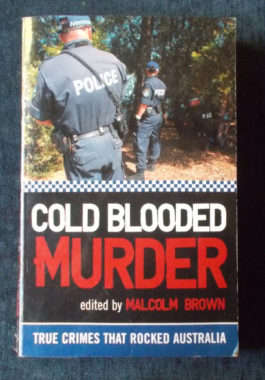 The true crimes that rocked Australia...Why do some people cross the threshold from rational behaviour to cold blooded murder? How can they do it? What motivates or activates that ability? Malcolm Brown and other award winning journalists examine the most cold blooded killings in modern day Australia. In this volume: The Murder of John Newman, M.P.; The Murderous Rampage of Danny Karam's Gang; The Bodies in the Barrels, Snowtown; The Murder of Margaret Tobin; Retribution in Wollongong: Paedophilia's Chain Reaction; Murder on Sydney's Northern Beaches; The Serial Infanticide of Kathleen Folbigg; The Murder of Maria Korp; The Spear-Gun Killer John Sharpe; Bumbling Matricide - The Murder of Margaret Wales-King and Paul King; Sef Gonzales - Getting Around the Problem of Poor Marks. Illustrated with black and white photographs.
The true crimes that rocked Australia...Why do some people cross the threshold from rational behaviour to cold blooded murder? How can they do it? What motivates or activates that ability? Malcolm Brown and other award winning journalists examine the most cold blooded killings in modern day Australia. In this volume: The Murder of John Newman, M.P.; The Murderous Rampage of Danny Karam's Gang; The Bodies in the Barrels, Snowtown; The Murder of Margaret Tobin; Retribution in Wollongong: Paedophilia's Chain Reaction; Murder on Sydney's Northern Beaches; The Serial Infanticide of Kathleen Folbigg; The Murder of Maria Korp; The Spear-Gun Killer John Sharpe; Bumbling Matricide - The Murder of Margaret Wales-King and Paul King; Sef Gonzales - Getting Around the Problem of Poor Marks. Illustrated with black and white photographs. -
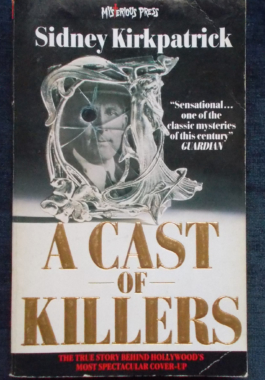 On February 1, 1922, the distinguished silent-film director William Desmond Taylor was shot dead in his Los Angeles bungalow. Reports of strange activities at the scene circulated soon after. When the police arrived, the head of Paramount Studios was burning a bundle of papers in the fireplace, and a well-known actress was searching the house for letters she claimed were hers. Despite a full-scale investigation - at one time there were over 300 suspects - the case was never solved; to this day it has remained a lingering Hollywood scandal. In 1967, more than forty years after Taylor's death, director King Vidor felt determined to solve the mystery which had haunted him throughout his career. He wanted to make a film about it. Through his intimate knowledge of both the studios and the stars, he succeeded - where dozens of professional detectives had failed - in discovering the identity of the murderer. But his findings were too explosive. He decided he could never go public and locked his evidence away. After Vidor's death in 1982, Sidney D. Kirkpatrick, Vidor's authorised biographer, gained access to the evidence and reconstructed the amazing story of Taylor's murder and Vidor's investigation. With a cast of suspects that includes the actress Mabel Normand, a reputed drug addict; the beautiful ingénue, Mary Miles Minter; Mary's domineering mother, Charlotte Shelby; Taylor's homosexual houseman; and Taylor's secretary, who bore an uncanny resemblance to Taylor's mysteriously elusive brother, this true crime story has all the elements of a classic murder mystery. Covered up for more than half a century, the full story can now be told in all its riveting, shocking detail. Contains black and white photographs.
On February 1, 1922, the distinguished silent-film director William Desmond Taylor was shot dead in his Los Angeles bungalow. Reports of strange activities at the scene circulated soon after. When the police arrived, the head of Paramount Studios was burning a bundle of papers in the fireplace, and a well-known actress was searching the house for letters she claimed were hers. Despite a full-scale investigation - at one time there were over 300 suspects - the case was never solved; to this day it has remained a lingering Hollywood scandal. In 1967, more than forty years after Taylor's death, director King Vidor felt determined to solve the mystery which had haunted him throughout his career. He wanted to make a film about it. Through his intimate knowledge of both the studios and the stars, he succeeded - where dozens of professional detectives had failed - in discovering the identity of the murderer. But his findings were too explosive. He decided he could never go public and locked his evidence away. After Vidor's death in 1982, Sidney D. Kirkpatrick, Vidor's authorised biographer, gained access to the evidence and reconstructed the amazing story of Taylor's murder and Vidor's investigation. With a cast of suspects that includes the actress Mabel Normand, a reputed drug addict; the beautiful ingénue, Mary Miles Minter; Mary's domineering mother, Charlotte Shelby; Taylor's homosexual houseman; and Taylor's secretary, who bore an uncanny resemblance to Taylor's mysteriously elusive brother, this true crime story has all the elements of a classic murder mystery. Covered up for more than half a century, the full story can now be told in all its riveting, shocking detail. Contains black and white photographs. -
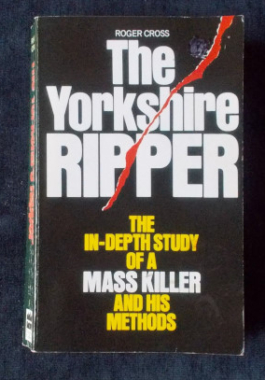 The author, the chief crime reporter for the Yorkshire Post worked on the sensational 'Yorkshire Ripper' case from the very beginning and was afforded the full co-operation and confidence of the Yorkshire Police. He delved deeply into every aspect of the case, interviewing, questioning and researching both Peter Sutcliffe's background, the strategies used and the problems encountered by the the police force assigned to catch him. Illustrated with black and white photographs.
The author, the chief crime reporter for the Yorkshire Post worked on the sensational 'Yorkshire Ripper' case from the very beginning and was afforded the full co-operation and confidence of the Yorkshire Police. He delved deeply into every aspect of the case, interviewing, questioning and researching both Peter Sutcliffe's background, the strategies used and the problems encountered by the the police force assigned to catch him. Illustrated with black and white photographs. -
 It can take years for love to turn to murderous hate - or it can happen overnight. What drives a woman or man to committ the ultimate betrayal - to take the life of a parent, a child, a sibling, a lover? This is a volume of unflicnhing exploration of fourteen well-known - and not so well-known - murder in the family cases and it takes the reader inside the life and mind of both the killer and victim. The cases include: The slaying of Maureen Thompson by her husband Rory; the murders of the four Folbigg children by their mother Kathleen; the sudden explosion of murderous rage within Sef Gonzales that resulted in the destruction of those closest to him; and more. Illustrated with black and white and colour photographs.
It can take years for love to turn to murderous hate - or it can happen overnight. What drives a woman or man to committ the ultimate betrayal - to take the life of a parent, a child, a sibling, a lover? This is a volume of unflicnhing exploration of fourteen well-known - and not so well-known - murder in the family cases and it takes the reader inside the life and mind of both the killer and victim. The cases include: The slaying of Maureen Thompson by her husband Rory; the murders of the four Folbigg children by their mother Kathleen; the sudden explosion of murderous rage within Sef Gonzales that resulted in the destruction of those closest to him; and more. Illustrated with black and white and colour photographs. -
 The Goatfell Murder: Near the summit of Goatfell, the body of Edwin Robert Rose was found stuffed under a granite boulder on 28 July 1889. He was a 32-year-old builder's clerk from London who had last been seen alive on the mountain a fortnight before. His head and face had been brutally smashed, probably by rocks. The last person seen in his company, a 26-year-old engineering worker known as John Annandale, was nowhere to be found. Annandale's real name was John Watson Laurie, a pattern maker for a Glasgow locomotive firm. He was caught by police two months later and at the end of a two-day trial under an impatient judge he was found guilty of murder, despite the lack of forensic evidence or any witnesses to the deed. But was there a miscarriage of justice? The Ardlamont Mystery: Alfred John Monson began working as a gentleman's tutor for the Hambrough family in 1891. In 1893 he took the lease on the Ardlamont estate in Argyll for the shooting season. On 10 August he took Windsor Dudley Cecil Hambrough, his 20-year-old pupil, for a day's hunting in an area of woodland. A third man joined them, Edward Scott, a friend of Monson. Estate workers heard a shot, then saw Monson and Scott running to Ardlamont House carrying the guns. Monson alleged that Hambrough had shot himself in the head by accident while climbing a fence. But with very large insurance policies having been taken out less than a week before... John Donald Merrett: He was tried for the murder of his mother, Bertha Merrett. It was at first believed that she had committed suicide - but it was discovered that Merrett had been defrauding her. His defence was skilful and the Jury returned a verdict of "Not Proven". Not proven - but was he innocent? The Portencross Murder: Mary Gunn, her sister Jessie McLaren and her sister's husband Alex McLaren were enjoying a quiet evening at an isolated cottage when six shoots were fired. Jessie and Alex were wounded - but Mary was dead. The family lived quietly; and were considered to be 'well-off' in the locality. The only clues were six footprints, a few spent bullets and evidence that a stranger had been asking the way to Portencross...
The Goatfell Murder: Near the summit of Goatfell, the body of Edwin Robert Rose was found stuffed under a granite boulder on 28 July 1889. He was a 32-year-old builder's clerk from London who had last been seen alive on the mountain a fortnight before. His head and face had been brutally smashed, probably by rocks. The last person seen in his company, a 26-year-old engineering worker known as John Annandale, was nowhere to be found. Annandale's real name was John Watson Laurie, a pattern maker for a Glasgow locomotive firm. He was caught by police two months later and at the end of a two-day trial under an impatient judge he was found guilty of murder, despite the lack of forensic evidence or any witnesses to the deed. But was there a miscarriage of justice? The Ardlamont Mystery: Alfred John Monson began working as a gentleman's tutor for the Hambrough family in 1891. In 1893 he took the lease on the Ardlamont estate in Argyll for the shooting season. On 10 August he took Windsor Dudley Cecil Hambrough, his 20-year-old pupil, for a day's hunting in an area of woodland. A third man joined them, Edward Scott, a friend of Monson. Estate workers heard a shot, then saw Monson and Scott running to Ardlamont House carrying the guns. Monson alleged that Hambrough had shot himself in the head by accident while climbing a fence. But with very large insurance policies having been taken out less than a week before... John Donald Merrett: He was tried for the murder of his mother, Bertha Merrett. It was at first believed that she had committed suicide - but it was discovered that Merrett had been defrauding her. His defence was skilful and the Jury returned a verdict of "Not Proven". Not proven - but was he innocent? The Portencross Murder: Mary Gunn, her sister Jessie McLaren and her sister's husband Alex McLaren were enjoying a quiet evening at an isolated cottage when six shoots were fired. Jessie and Alex were wounded - but Mary was dead. The family lived quietly; and were considered to be 'well-off' in the locality. The only clues were six footprints, a few spent bullets and evidence that a stranger had been asking the way to Portencross... -
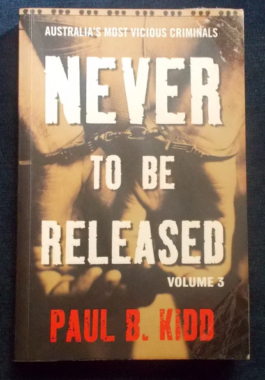 The third book in Kidd's chilling Never To Be Released series. Each year in Australia crimes are committed that are so evil their perpetrators are sentenced to the maximum punishment that the law allows. And seeing as there is no death penalty in any state of Australia, these worst-of-the-worst are sent to prison for life without the possibility of parole. It is termed 'never to be released'. To date, no criminal who has ever been handed down this sentence has been set free; they will die in jail as the law demands. But the fear of going to prison forever obviously does little to deter people from committing crimes of the most heinous nature. Kidd, a recognised authority on Australia's serial killers and criminals, looks at such cases as: the housewife who skinned her de-facto husband, cooked his head in a pot and served him up to his kids for dinner; a mild-mannered serial rapist and murderer who was so ordinary-looking that his victims trusted him immediately - time and time again; and a serial killer whose 'victim' turned up alive and well in the middle of his trial for her murder. Illustrated with black and white photographs.
The third book in Kidd's chilling Never To Be Released series. Each year in Australia crimes are committed that are so evil their perpetrators are sentenced to the maximum punishment that the law allows. And seeing as there is no death penalty in any state of Australia, these worst-of-the-worst are sent to prison for life without the possibility of parole. It is termed 'never to be released'. To date, no criminal who has ever been handed down this sentence has been set free; they will die in jail as the law demands. But the fear of going to prison forever obviously does little to deter people from committing crimes of the most heinous nature. Kidd, a recognised authority on Australia's serial killers and criminals, looks at such cases as: the housewife who skinned her de-facto husband, cooked his head in a pot and served him up to his kids for dinner; a mild-mannered serial rapist and murderer who was so ordinary-looking that his victims trusted him immediately - time and time again; and a serial killer whose 'victim' turned up alive and well in the middle of his trial for her murder. Illustrated with black and white photographs. -
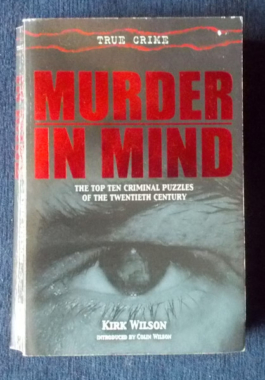 Investigative journalist Kirk Wilison tackles some of the most high-profile and confusing crimes to go unpunished. The investigations of top-ranking police officers, detectives and lawyers all failed to crack the riddles these cases created: who was responsible? And why were they never brought to justice? These are the crimes that we can never stop wondering about. Cases examined in this volume: John F. Kennedy's assassination; Jimmy Hoffa, union leader and mob associate, whose body was never found; Marilyn Monroe, screen goddess, whose 'suicide' raised more questions than it answered; Lord Lucan, peer and gambling addict, who vanished ito thin air amid accusations of murder; T. Cullen Davis, born-again Christian and the richest man ever to be tried for murder; Serge Rubenstein, the virtuoso swindler whose case was clouded by the fact that thousands of people had reason to wish him dead. Claus Von Bulow, lawyer, consultant and socialite, who made two attempts on the life of his American wife; Joan Robinson Hill may have been murdered by her husband John Hill - then it seemed that John Hill himself was murdered on his own front doorstep - but was he? Helen Vorhees Brach, who disappeared at age 65 - the victim of a slick pure-bred horse salesman?
Investigative journalist Kirk Wilison tackles some of the most high-profile and confusing crimes to go unpunished. The investigations of top-ranking police officers, detectives and lawyers all failed to crack the riddles these cases created: who was responsible? And why were they never brought to justice? These are the crimes that we can never stop wondering about. Cases examined in this volume: John F. Kennedy's assassination; Jimmy Hoffa, union leader and mob associate, whose body was never found; Marilyn Monroe, screen goddess, whose 'suicide' raised more questions than it answered; Lord Lucan, peer and gambling addict, who vanished ito thin air amid accusations of murder; T. Cullen Davis, born-again Christian and the richest man ever to be tried for murder; Serge Rubenstein, the virtuoso swindler whose case was clouded by the fact that thousands of people had reason to wish him dead. Claus Von Bulow, lawyer, consultant and socialite, who made two attempts on the life of his American wife; Joan Robinson Hill may have been murdered by her husband John Hill - then it seemed that John Hill himself was murdered on his own front doorstep - but was he? Helen Vorhees Brach, who disappeared at age 65 - the victim of a slick pure-bred horse salesman? -
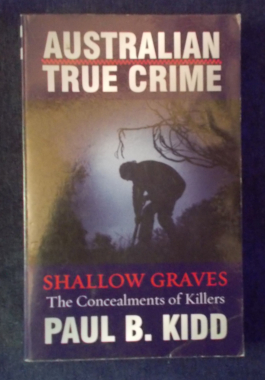 Shallow graves play a grim part in many of Australia's most mysterious, bizarre and horrendous murder cases. And Australia's bushland, beaches, deserts, foreshores and suburban landscapes offer many opportunities for a murderer to hide his victim. But in this updated edition, Kidd points out how even the best-laid plans of the most devious can go astray when a body turns up. Illustrated with black and white photographs.
Shallow graves play a grim part in many of Australia's most mysterious, bizarre and horrendous murder cases. And Australia's bushland, beaches, deserts, foreshores and suburban landscapes offer many opportunities for a murderer to hide his victim. But in this updated edition, Kidd points out how even the best-laid plans of the most devious can go astray when a body turns up. Illustrated with black and white photographs.


